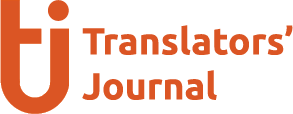Martin Luther’s Bible translation is a milestone in the history of translation studies.
He transformed scripture from a Latin text that only scholars could read into plain German that ordinary people understood. Today’s translators face a similar challenge: making specialized content accessible without losing accuracy.
In this article, we will explore how Luther’s methods offer a proven framework for reader-centered translation that balances fidelity with clarity.
Who Was Martin Luther and Why His Translation Matters
Martin Luther (1483–1546) was a 16th-century German theologian. He is most notably known for leading the Protestant Reformation, but his translation work had equally profound effects.
In Luther’s time, the Bible existed only in Latin. It was read and studied only by the priests and scholars. The common people had no way to access the message of the Bible other than listening to others’ interpretations. Luther challenged this knowledge monopoly.
Luther translated the Bible into German in a language people can understand. His translation of the Bible became so popular and made significant impacts in different areas. His translation of the Bible:
- Increased literacy rates across German-speaking regions
- Standardized the German language by creating consistent vocabulary and grammar
- Shifted power dynamics by giving readers direct access to religious texts
Martin Luther’s Three Translation Principles
Luther proved that translation isn’t just linguistic conversion. It’s about making the message of a text available to an audience. He showed that effective translation requires understanding both the source text and the people who will read it.
Luther also articulated his translation philosophy clearly. He insisted on three core principles that remain relevant five centuries later.
Clarity Trumps Literalness
Luther refused to translate word-for-word when it produced confusing German. He prioritized what the text meant over what the text literally said when the two conflicted.
You must ask the mother in the home, the children on the street, the common man in the marketplace… and translate accordingly.
Martin Luther (1483–1546), German theologian
Balance Fidelity with Comprehension
Luther didn’t abandon accuracy. He studied Greek and Hebrew texts carefully, consulting scholars and experts. But he rejected translations that were technically correct yet incomprehensible.
Use Language People Actually Speak
Luther chose everyday vocabulary and natural sentence structures.
He avoided archaic forms and academic terminology. His translation sounded like spoken German, not written Latin translated into German words. This made the text feel immediate and relevant rather than distant and formal.
Practical Tips and Strategies From Luther’s Translation Principles
Making a text accessible to the common reader requires more than simplifying vocabulary.
It demands clear structure, intuitive phrasing, cultural awareness, and a deep understanding of the audience’s needs. The goal is to preserve meaning while removing obstacles that prevent readers from understanding, learning from, and using the information.
The following strategies used by Martin Luther provide a practical framework for achieving clarity without sacrificing accuracy or nuance.
Focus on Meaning, Not Form
Prioritize conveying the source text’s intent rather than replicating its structure.
When long or nested sentences obscure meaning, restructure them. Identify the main idea, break subordinate clauses into shorter sentences, and connect them with clear transitions.
Simplify language and syntax without simplifying the underlying concepts.
Use Familiar, Audience-Appropriate Language
Choose words your readers naturally use. General audiences benefit from common vocabulary; specialists may expect technical precision.
For mixed audiences, define or briefly explain complex terms the first time they appear. The guiding test: would a newcomer understand this without rereading?
Localize Cultural and Contextual Elements
Idioms, metaphors, and culturally bound expressions rarely work word-for-word.
Replace them with target-language equivalents, explain them concisely, or use neutral descriptions that preserve meaning.
Always choose what resonates most naturally with the intended reader.
Maintain the Intended Tone
Accessibility does not require oversimplification.
Match the source text’s tone—formal, technical, persuasive, or narrative—while making it readable. Legal texts should remain formal but clear; marketing content should stay engaging; technical manuals should be precise but comprehensible.
Understand Your Audience Deeply
Effective clarity depends on understanding who you are writing for.
Assess their education level, cultural context, familiarity with the subject, and purpose for reading the text. A translation aimed at patients differs significantly from one aimed at physicians; the same applies across all domains.
Preserve Nuance While Ensuring Clarity
Complex ideas should remain intact.
Use straightforward structures and vocabulary to express them, but avoid flattening important distinctions. When nuance is essential, preserve it; when complexity comes only from linguistic ornamentation, remove it.
Balance Accuracy with Readability
Some clients may equate literal translation with accuracy.
Explain when dynamic translation better preserves meaning. Show how structure and register in the target language may require rethinking the form to maintain accuracy in comprehension.
Use Tools and Feedback to Improve Readability
Readability metrics (Flesch scores, grade-level indices, vocabulary analysis) help detect unnecessary complexity, but judgment remains key. Wherever possible, test your translation on real readers from your target group. Identify where they slow down, stumble, or misinterpret—and revise accordingly.
Build Consistency Through Glossaries
Maintain a project glossary documenting terminology choices, definitions, usage contexts, and rejected alternatives. This ensures uniformity across documents, supports team collaboration, and helps readers follow terminology reliably.
Refine Iteratively
Treat translation as a multistage process. Initial drafts capture meaning; later passes improve clarity, structure, tone, and flow. Continue refining until the text reads naturally and supports reader understanding.
Approach the Work Like a Teacher
Your goal is to make knowledge accessible, not to impress with complexity. Guide readers through concepts with clarity and respect. Ensure they can understand, learn from, and use the information independently—echoing Luther’s conviction that translation empowers people.
Translation is for the People
The question isn’t whether to translate literally or dynamically. It’s whether your reader will grasp the meaning you’re conveying. Answer that question correctly, and you’re translating like Martin Luther.
Martin Luther showed that translation is fundamentally about connecting people to ideas. His Bible translation succeeded because he prioritized reader comprehension above everything else.
Five centuries later, the core challenge remains unchanged. Translators bridge linguistic and cultural gaps, making knowledge accessible across boundaries. Whether you’re translating literature, legal documents, technical manuals, or marketing content, your fundamental task is the same: help your readers understand.
Apply Luther’s principles:
- Know your audience intimately
- Prioritize clarity without sacrificing accuracy
- Use language people actually speak
- Make knowledge accessible to those who need it
Every translation you produce is an opportunity to empower readers. Like Luther, you can make words matter for everyone. —not just for specialists, scholars, or insiders, but for the common reader who simply wants to understand.

